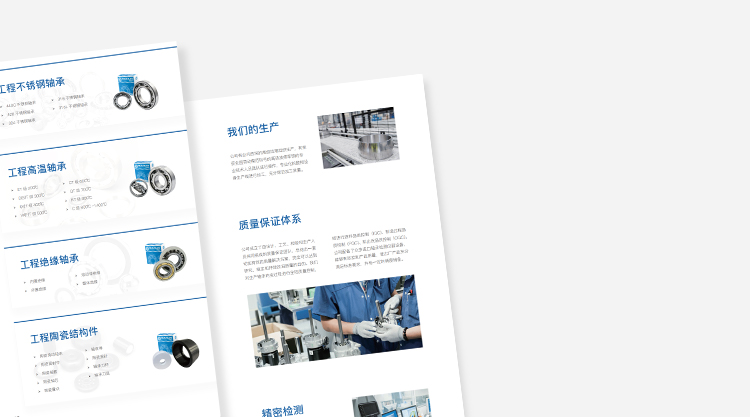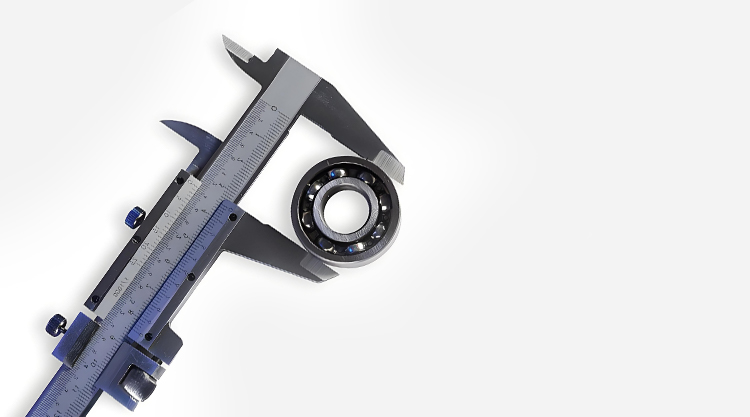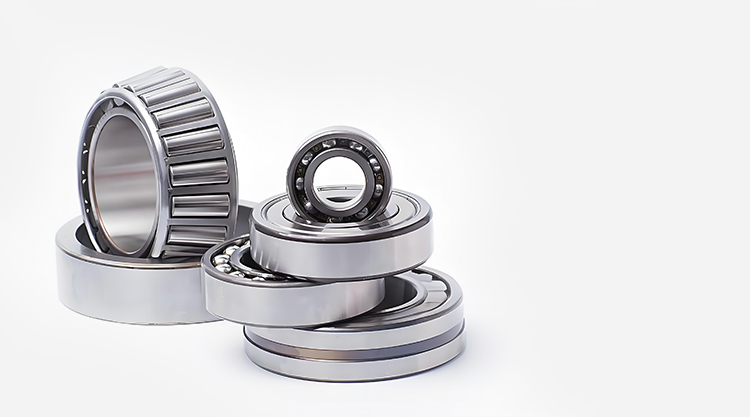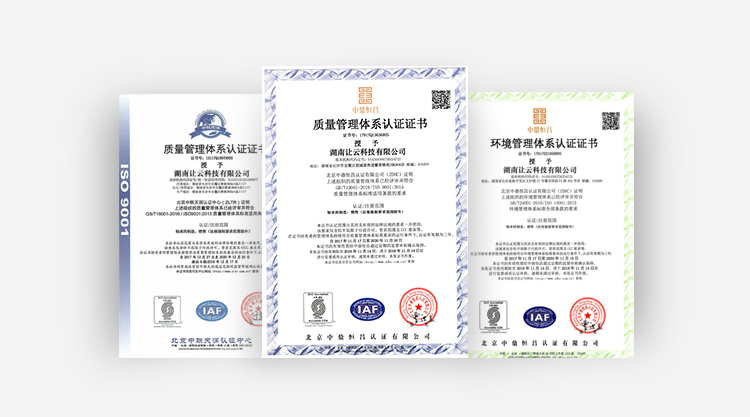Angular Contact Bearings: Structural Features, Application Scenarios
I. Structural Characteristics of Angular Contact Bearings
The raceway design of angular contact bearings determines their load-bearing characteristics. Unlike deep groove ball bearings, the inner and outer ring raceways of angular contact bearings have a certain contact angle in the axial direction, commonly 15°, 25°, and 40°.
| Smaller contact angle | The bearing is suitable for high-speed operation but has weaker axial load capacity; |
|---|---|
| Larger contact angle | The bearing has stronger axial load capacity but relatively lower speed. |
This allows angular contact bearings to be flexibly selected in mechanical design to meet the precision and load requirements of different equipment.
II. Main Types of Angular Contact Bearings
According to different installation methods and structural designs, the common types of angular contact bearings include:
| Single-row angular contact ball bearing | Can only bear axial load in one direction and usually needs to be installed in pairs. |
|---|---|
| Double-row angular contact ball bearing | Can bear axial load in both directions, with a compact structure, suitable for equipment requiring higher load capacity. |
| Four-point contact ball bearing | With a 35° contact angle, it can bear axial load in both directions and is commonly used in applications with limited space but requiring high load capacity. |
III. Paired Installation Methods of Angular Contact Bearings
To meet different working requirements, angular contact bearings are often installed in pairs:
| Face-to-face installation (DB) | Suitable for bearing axial forces in both directions, with strong support rigidity; |
|---|---|
| Back-to-back installation (DF) | Suitable for bearing larger moments, with good installation rigidity; |
| Tandem installation (DT) | Suitable for bearing larger axial loads in a single direction. |
Through different combinations, angular contact bearings can meet the requirements of machine tool spindles, high-speed motors, and other applications for precision and rigidity.
IV. Application Fields of Angular Contact Bearings
Angular contact bearings, due to their high speed, high rigidity, and high load capacity, are widely used in the following fields:
| CNC machine tool spindle | Ensures high speed and high precision cutting; |
|---|---|
| Motors and pumps | Bears complex radial and axial loads; |
| Aerospace | Adapts to high temperature, high speed, and complex load conditions; |
| Medical equipment | Such as high-speed dental handpiece bearings, requiring small size and high precision. |
V. Key Points for Selecting Angular Contact Bearings
When selecting angular contact bearings, the following aspects should be considered:
| Operating speed | For high-speed applications, choose a small contact angle (e.g., 15°); |
|---|---|
| Load requirements | For large axial loads, choose a large contact angle (e.g., 40°); |
| Installation space | For limited space, double-row or four-point contact ball bearings can be selected; |
| Installation method | Select DB, DF, or DT installation forms according to the load characteristics. |
As an indispensable component in industrial equipment, angular contact bearings combine high precision, high load capacity, and high-speed performance. Properly selecting the model and installation method of angular contact bearings can not only improve equipment operating efficiency but also effectively extend bearing life.
-
11 2025.09Do new bearings require grease? A Comprehensive Guide to Bearing Lubrication and Main
This article will comprehensively analyze whether new bearings require grease lubrication and provide lubrication considerations for different operating conditions, based on practical applications.
-
11 2025.09When to Choose Ceramic Bearings in Corrosive Environments?
This article will analyze when ceramic bearings should be selected in corrosive environments and how to perform proper selection based on common operating conditions.
-
11 2025.09Unveiling the Golden Film: How This Film Controls the Lifeblood of Global Industry? B
When you swipe through this push notification on your foldable screen phone,
-
11 2025.09Revealing the Core Power of Semiconductor
1. Semiconductor "Involution" Upgrades, CMP Equipment Becomes a Global Battleground




